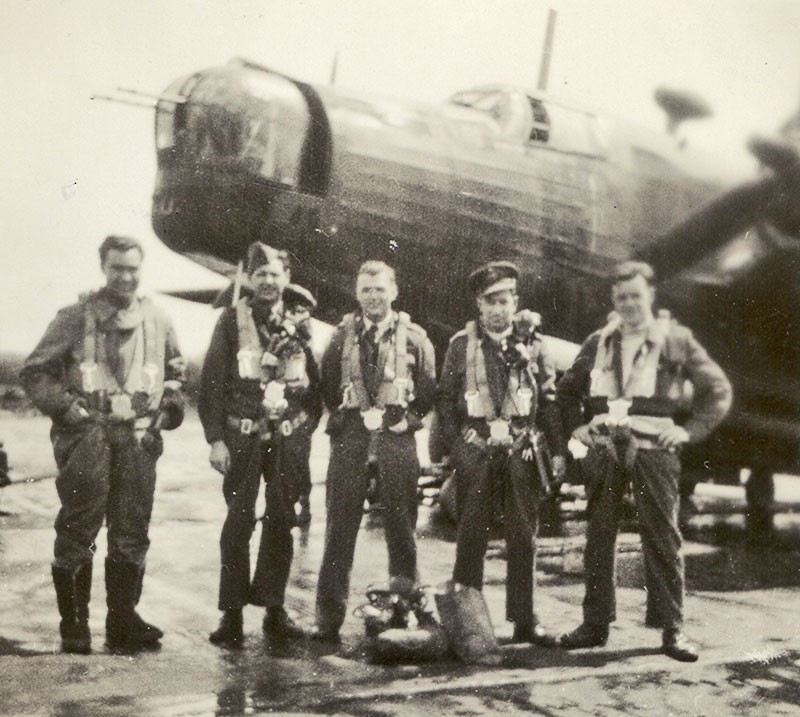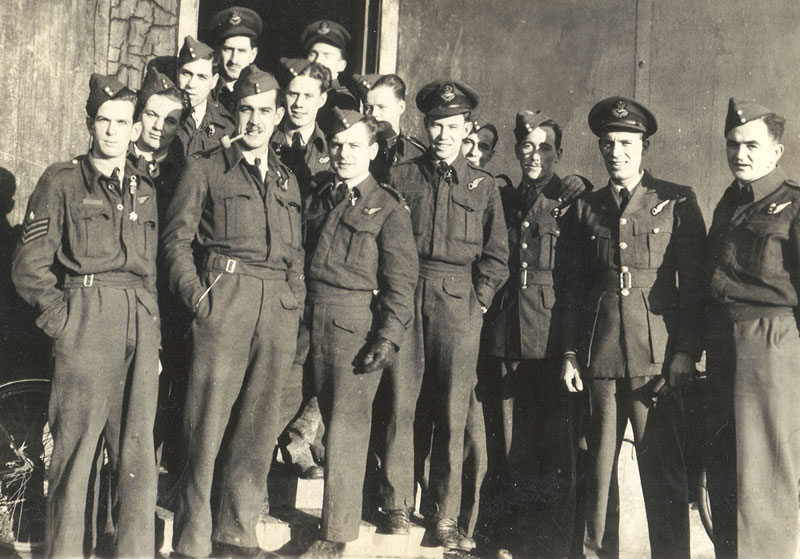Joseph Higgs was born on 22nd January 1922 in New Glasgow, Nova Scotia but his family moved to Toronto in 1928. Correspondance with his daughter in February 2012 has resulted in a great deal of fresh information coming to be included in these webpages. In 1936 Joseph Higgs was at High School but wished to learn a trade so enrolled at the Central Technical School, Toronto which at that time included an aeronautical part to regular High School subjects. While in the third year here Joe gained his Private Pilot License and worked for DeHavilland during the following Summer. He enlisted into the RCAF (possibly) in 1940/41 and the account below gives a good degree of the time scales involved in which air observers went through in the first half of the War. He recorded in a family record that his basic training was for a period of six weeks at the Exhibition Grounds in Toronto and he was then posted to Aylmer, Ontario to 14 S.F.T.S. He may well have received his commission around this date upon completion of this training. After this course he was granted a week leave and was then posted to an Air Observer School at Ancienne Lorette, Quebec and after attending this course he was again granted a week leave before posting to Halifax, Nova Scotia to await a Troop ship to transport him to the UK.
He crossed the Atlantic and the ship docked at Greenock, Scotland, he travelled to Bournemouth by train and after further training he was granted two weeks leave. He was due to be posted for RCAF training in the UK but this was to take some weeks so he volunteered for a period of army co-operational service in the weeks before his next RCAF posting. He received a posting to join the 10th Light Artillary Unit of the 1st Division of the Canadian Army and undertook duties of spotting enemy aircraft and to report these activities to near by Biggin Hill airfield.
He received notification that he was to complete his navigation training in the RCAF and resumed regular aircrew duties in the UK, having trained at the Air Observer School at Dumfries, Scotland he was posted to the Operational Training Unit at Wellesbourne Mountford where he formed a five-man crew to fly Wellingtons. Known members of this original crew comprised of Joe Higgs (navigator), Reg Poole (wireless operator), Sandy McGregor (rear gunner) and Allen Wellesley (pilot) and probably Smith (bomb aimer). Joe Higgs' account of his wartime days then includes details that as they were about to complete their training they should have been posted to 425 Squadron around May 1943 but 425 Squadron were soon to be posted to North Africa in May 1943 so the crew were diverted to 433 Squadron and based at Skipton on Swale. Soon after this their original pilot requested a transfer to Fighter Command and left as he was apparently not happy with being a Bomber Command pilot (this researcher has no information as to the precise details of him leaving this crew). The pilotless crew were then assigned F/O Hatfield as their new pilot but Joe Higgs records stated that he was not very sociable and as a result not much was known about him at the time let alone seventy years after!! This new crew then had to go through further training and after completing the training were posted to 432 Squadron.
The photograph above shows what is believed to have been the Hatfield crew while flying Wellingtons with 432 Squadron, exactly who is who is not yet known. Joe Higgs is fourth from left.
A good group photograph taken of all 432 Squadron naviagtors. Joseph Higgs is stood on in the doorway on the left. I would welcome any other names for these airmen.
Joe returned to civilian life after the War, he married and had four children. He worked at a number of widely different jobs across Canada before setting up one company in Calgary and later another company in Saskatoon. He passed away on 25th February 1992, aged seventy.



Joe Higgs escaped injury after baling out of Lancaster DS832 over the North Yorkshire Moors. He recalled in his personal account that he believed that F/O Hatfield had sustained a broken leg in a bad landing so this flight was the last flight the crew made together before being posted their seperate ways. Joe Higgs remained with 432 Squadron and acted as a spare navigator to complete his Tour, after this he was received two postings in the UK at training bases but in August 1944 was posted back to Canada. He first proper posting on his return to Canada was to be attached to an RCAF Army Co-operation unit named "Eskimo Exercise" in the Artic. He ended the War having received a promotion to S/Ldr flying in a unit undertaking aerial photography for the Mapping Department of the Canadian Government.
I would like to thank Joseph Higgs' daughter, Mrs Barbara Pillar, for all the help, information and photographs she has been kind enough to provide this account.